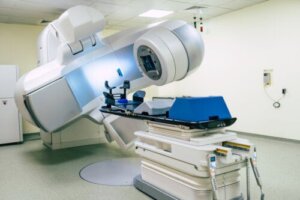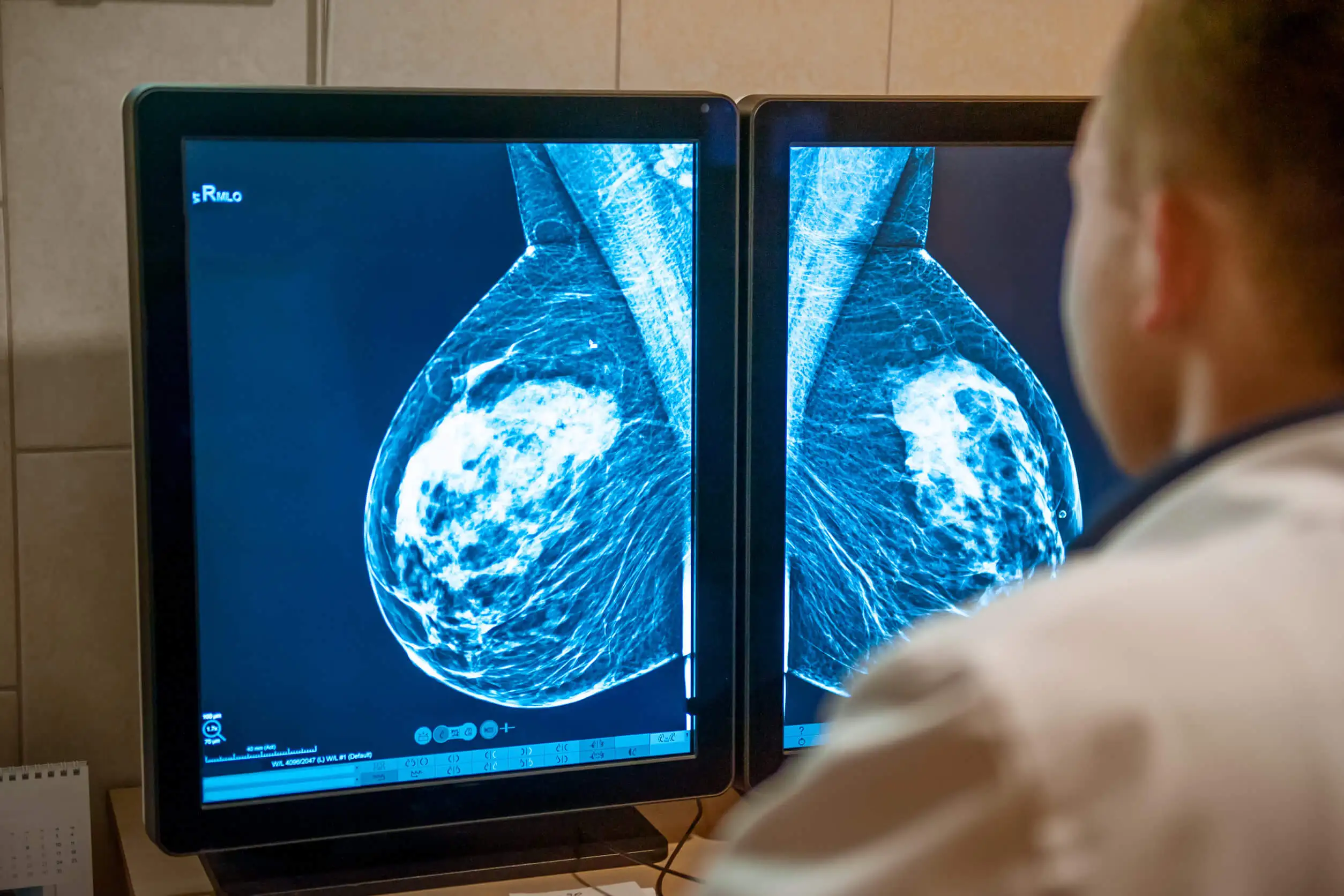What Is Proton Therapy for Breast Cancer?


Written and verified by the doctor Mariel Mendoza
Proton therapy, or proton radiation therapy for breast cancer is an advanced form of radiation therapy used to kill cancer cells in a targeted manner. The difference between proton therapy and conventional radiation therapy is that proton therapy uses charged particles called protons instead of ionizing radiation or X-rays.
This allows the therapy to be more precisely targeted to the site of the malignant cells. Surrounding healthy tissues are protected in this way.
What is proton therapy?
Proton therapy for cancer is administered using a device called a cyclotron. This device sends a beam of high-energy protons through the skin and directly at the tumor.
The use of a proton beam, as with conventional radiation therapy, causes damage to cell DNA. This therapy penetrates directly to the tumor and allows for better dosage and depth, reducing the risk of the side effects associated with radiation damage to normal tissues.
This is why, particularly in breast cancer, proton therapy prevents radiation damage to the heart and lungs. It’s a useful alternative in particular cases of patients who are at higher risk of cardiac problems, either because of their particular characteristics or because of their personal medical history.
This treatment has an additional advantage. It allows a higher dose of proton therapy to be used to increase the chances of killing malignant cells.

How is proton therapy administered?
Prior to treatment, a CT or MRI scan should be performed to establish a three-dimensional map of the tumor. Then, using computer programs and specialized software, the oncologists calculate how to administer the treatment in the right doses and in the right place.
The ideal site for the treatment is marked on the skin so that it can be identified during the sessions without error.
Proton therapy is performed in a room suitable for it. The person must be kept in an exact position on the treatment table so that the proton beam can be directed.
The session is fairly quick and lasts about 30 minutes. It’s usually performed 5 times a week for a period of 6 weeks. This treatment isn’t painful.
Associated adverse effects
In general, the most frequent side effects of proton therapy are the same ones associated with conventional radiotherapy:
- Fatigue
- Weight loss
- Pain in the area of application
- Reddening of the skin around the region of beam incidence
Everything you should know about: Breast Cysts: What Do They Mean?
Benefits of proton therapy for breast cancer
In breast cancer, those who benefit most from proton therapy are patients who are at the greatest risk of radiation effects on the heart and coronary vessels. This can apply to women:
- Who have already had a mastectomy
- With a history of heart disease
- Who have received radiation treatment on regional lymph nodes.
- With tumors on the left side or in the lower quadrant of the breast.
On the other hand, proton therapy is indicated in cases of breast cancer diagnosed as any of the following types:
- Recurrent
- Inflammatory
- Triple-negative
- Ductal carcinoma in situ
- Invasive ductal or lobular carcinoma
- Early stages (stage I)
- Locally advanced (stages II and III)
Proton therapy appears to be especially useful in the early stages of breast cancer, especially if the woman already had conservative surgery. In such patients, the recurrence or spread of cancer cells could be avoided with this approach.
On the other hand, it’s also used in recurrences. It’s a good option for those who have already received conventional radiotherapy in an area close to the one that denotes a recurrence of the tumor.

Find out more: Types of Surgery in Breast Cancer Treatment
Is proton therapy alone sufficient?
No, proton therapy is usually only one part of the approach, which also includes surgery (mastectomy with or without lymph node removal), conventional radiation therapy, chemotherapy and hormonal, biological or targeted therapy.
In addition, this technique is used in other types of cancer and not only breast cancer. It’s used in the following oncological variants:
Because proton therapy penetrates directly to the tumor, it reduces the risk of radiation side effects in healthy tissues. In the case of breast cancer, it prevents damage to the heart and lungs. It also allows a higher dose to be applied.
It’s a non-invasive treatment, convenient for a faster return to daily activity. It offers similar or superior results to conventional radiotherapy and reduces the risk of cancer spread or recurrence.
All cited sources were thoroughly reviewed by our team to ensure their quality, reliability, currency, and validity. The bibliography of this article was considered reliable and of academic or scientific accuracy.
- California Protons. Tratamiento del cáncer de mama con terapia de protones. Californiaprotons S.F. Disponible en https://www.californiaprotons.com/es/breast-cancer/#stage-4.
- Chowdhary M, et al. Is Proton Therapy a “Pro” for Breast Cancer? A Comparison of Proton vs. Non-proton Radiotherapy Using the National Cancer Database. Front Oncol 2018;8. Disponible en https://www.ncbi.nlm.nih.gov/pmc/articles/PMC6339938/.
- DerSarkissian C. Proton Therapy for Breast Caner. WebMed 2022. Disponible en https://www.webmd.com/breast-cancer/proton-therapy-breast-cancer.
- Hug E, et al. Proton Therapy for Primary Breast Cancer. Breast Care (Basel) 2018;13(3). Disponible en https://www.ncbi.nlm.nih.gov/pmc/articles/PMC6062734/.
- Sheets, Nathan C., et al. “Intensity-modulated radiation therapy, proton therapy, or conformal radiation therapy and morbidity and disease control in localized prostate cancer.” Jama 307.15 (2012): 1611-1620.
- Tian X, et al. The evolution of proton beam therapy: current and future status. Mol Clin Oncol 2018;8(1). Disponible en https://www.ncbi.nlm.nih.gov/pmc/articles/PMC5772792/.
- Vyfhuis, Melissa AL, et al. “Advances in proton therapy in lung cancer.” Therapeutic advances in respiratory disease 12 (2018): 1753466618783878.
- Weber, Damien C., et al. “Proton therapy for brain tumours in the area of evidence-based medicine.” The British journal of radiology 93.1107 (2020): 20190237.
This text is provided for informational purposes only and does not replace consultation with a professional. If in doubt, consult your specialist.








